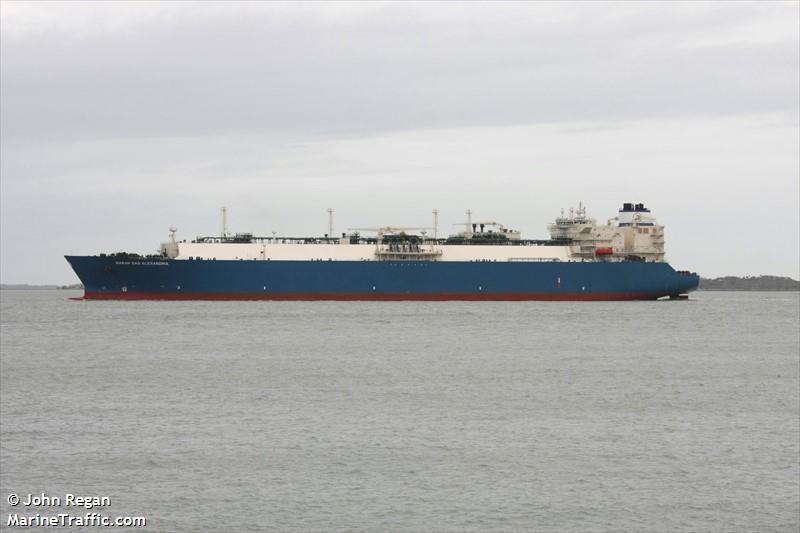Nine Ways to Avoid Collision with Big Ships
- Unless you need to be there, stay out of the designated shipping channels. Shipping lanes are well-marked and laid out along a depth curve of 60 feet or deeper. If you must use (or cross) them, look around carefully to be sure there’s no traffic and that you’ll be able to get out of the way in time if the situation changes. Stay to the outer edge or outside if you can. If you have to cross a shipping lane, bisect it at a perpendicular angle.

- Don’t play games with big ships. Learn to estimate how long it will take the vessel to reach your vicinity and what you’ll have to do to get out of its way — stop, slow, or change course — and act immediately. Remember that cargo ships and tugs travel fast. Sailboats, which are slow under any circumstances, face a triple risk: Wind direction or chop could impede any fast escape; the breeze may die suddenly; and your engine could fail.
- Be sure that you keep monitoring the big ship’s movement and that you’re continually calculating how soon it will reach your area and what you’ll need to do to avoid it. Has the ship (or tug-and-barge rig) changed course or speed? Are there other big ships coming into view? Are they likely to pass or overtake each other anywhere near where your own vessel will be? How can you avoid getting into danger? One way to gauge whether you’re on a collision course with a big ship is to take a series of bearings of it using a hand-held compass as your own boat is traveling at a constant speed and heading. If the bearing to the other vessel is moving forward, it should pass ahead of you; if it’s moving aft, it should pass astern. If the bearings remain constant, you’re heading for a collision and should take action immediately.
- Never try to cut between a tugboat and the barge it’s towing. Although the towline may not be visible if the barge is far behind the tug and the towline has sagged beneath the water, it’s still there; it can sink your boat and kill you if you run into it. Wind or current often can push a barge sideways from the position you’d expect it to be just behind the tug, so you’ll need to give the entire rig a wide berth.
- Keep your VHF-FM marine radio on when you’re anywhere near big ships or tugs. If you need to talk to the ship’s captain or pilot — to tell him that you’ve broken down in the channel, for example — call him on Channel 13, the frequency reserved for talking with big ships. Large vessels monitor it closely and will call you if they see a danger. If your radio doesn’t work, stand on your deck and keep waving your arms. If you’re going to contact a big ship or a tug, be sure you know how to describe your position in layman’s terms, such as “two miles south of buoy #78,” rather than giving the captain a numerical latitude and longitude, which he doesn’t have time to write down and plot. At night, it’s best to have a flashlight ready to shine on your mainsail so the captain or pilot can spot you quickly.
- Be especially vigilant and courteous in crowded waterways such as major harbors, where traffic is heavy and the pilots, ship captains, and crews have even more to worry about, including bridge pilings, scores of pleasure boats, and rapid currents. At the same time, they need to make a minimum speed to maintain steerage and to meet their docking schedules.
- Never anchor in a shipping channel. Not only is it illegal — prohibited by the Rules of the Road — it’s dangerous. A boat that’s drifting and just bobbing around is less likely to be struck than one that is anchored. The current may push a drifting boat out of the channel or the ship’s own bow wave may nudge it away. An anchored boat doesn’t stand a chance if it’s hit.
- Pay attention when a big ship sounds the danger signal: five short blasts on its whistle, which usually sounds more like a horn. That means the vessel’s captain is very concerned that your vessel and his (or hers) are heading for a collision. If the ship’s captain is worried, you should be, too. Take emergency action immediately to get out of the tight spot. Do so quickly and obviously enough that the captain will see you’re leaving.
- Equip your boat with a radar reflector, and hoist it high on a signal halyard, where it will do the most good. (Radar reflectors are the opposite of stealth technology; rather than hiding your boat from the other ship’s radar, they show up as a larger blip.) If you have an Automatic Identification System (AIS), by all means use it. But remember, neither device makes it safe for you to let your guard down.
- Here's one more from SpinSheet's editor: Go to marinetraffic.com and put the free Marine Traffic app on your phone---better yet, upgrade to a paid version so that your boat's track is visible to ships Then, you can see what's coming and how fast it's moving... even what kind of ship it is.
~by Capt. Art Pine




